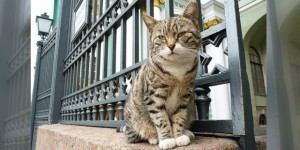Saint Petersburg’s Hermitage Museum was founded in 1754 by the Catherine the Great, and opened to the public in 1852. Being one of the largest and oldest museums in the world, it is only natural that the Hermitage houses one of the world’s great collections: more than three million pieces, one third of them accounted for by the museum’s stamp collection alone. The Hermitage is home to the biggest painting collection on the planet, divided among the six impressive buildings that make up the whole complex.
Taking into account that only a minimum of the whole collection is on permanent display, preserving and storing these treasures is probably the main mission of this institution. In fact, the collections were seriously threatened in the early 18th century when a plague of mice infested the basements of the Winter Palace, a former residence of the Russian tsars that is now one of the buildings of the museum. Mice destroyed the imperial kitchen, and Elizabeth of Russia – who was empress then — brought in cats to patrol the palace.
As kittens succeeded kittens, the empress decided to keep the cats permanently, to keep vermin at bay. They’ve been there ever since.
The Hermitage cats were not well treated during the Soviet era, especially during the famine that followed World War II, and for a time they deserted their habitat. Felines were reintroduced to the museum in the mid-1950s, as rats had taken advantage of the room to prosper. The Hermitage cats are now under a special protection program begun in the 1990s, and the museum administration constantly recruits stray cats to join their ranks, sponsoring meals and vet care. Visitors, in turn, can adopt a Hermitage cats themselves, should they want to take home a kitten well-versed in the history of art.
Ask me anything
Explore related questions





